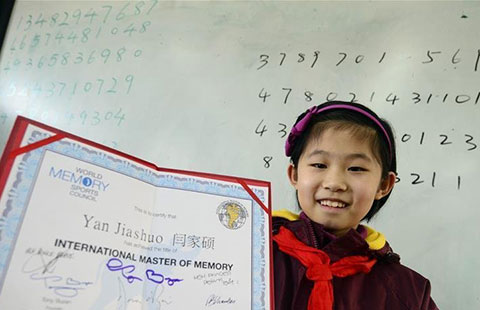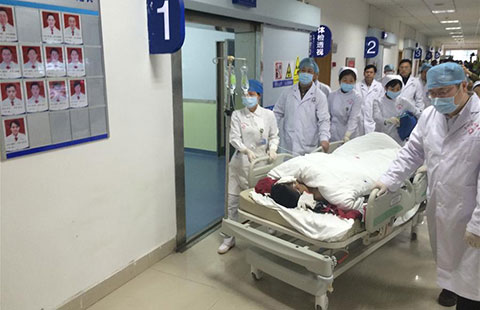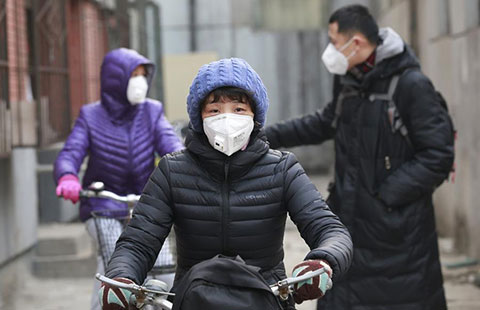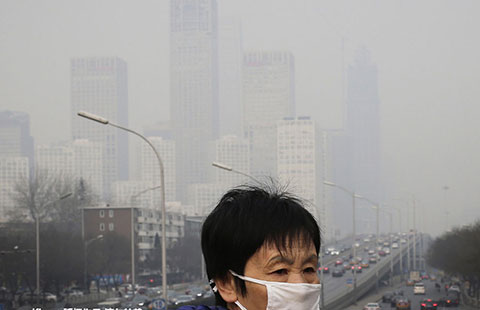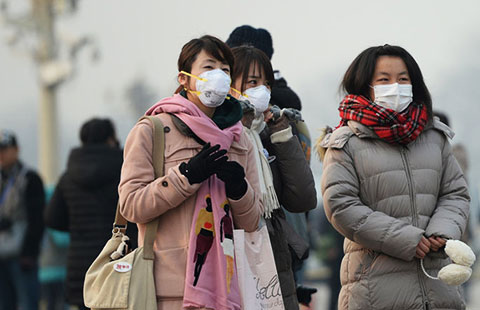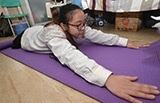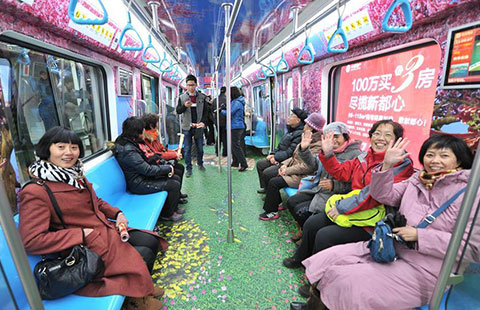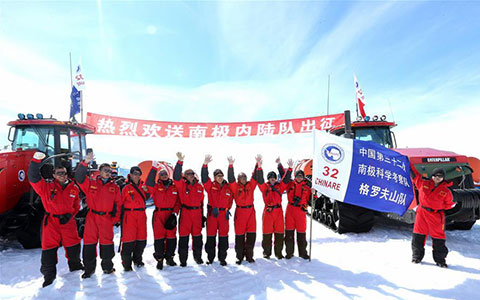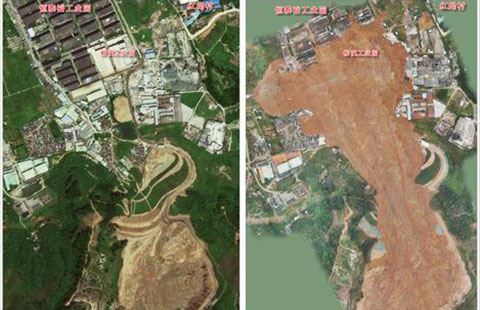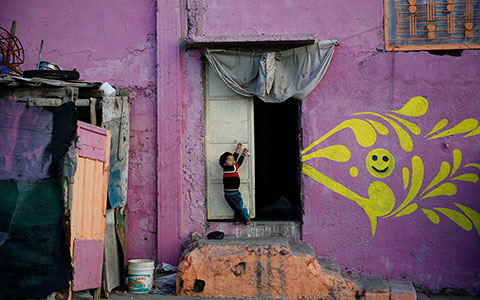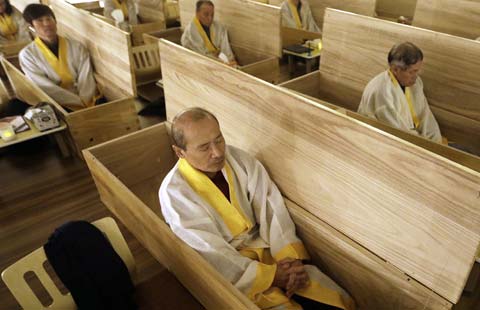

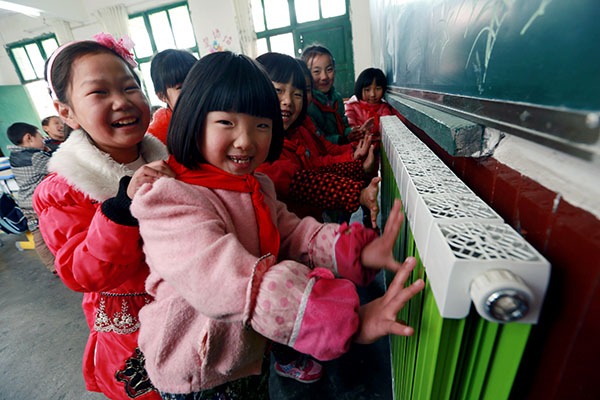 |
|
Children gather around a new radiator in Yunyang county, Chongqing. This year, the county has installed heating systems in schools situated 800 meters above sea level. Liu Xingmin / for China Daily |
Although his parents are expecting him to return to his hometown for Spring Festival, China's most important festival for family reunions, Liu Yueting has decided not to go, despite not having seen his parents for six months.
"It's all because of my little girl. Our 2-year-old traveled from Beijing to Nanjing with us last Spring Festival. Although my parents' house has air conditioners, she caught a bad cold because of the lack of central heating," the 35-year-old said.
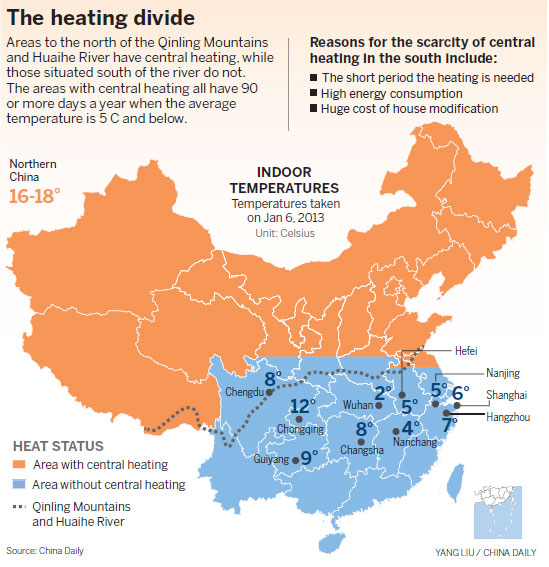
"I spent more than 20 years in Nanjing without heating, but once I experienced the heating in North China, I could no longer bear the freezing winters in the south. I don't want my baby girl to spend a second Spring Festival in the hospital," he said.
When he was a child in the south of China, Liu never imagined that people could wear T-shirts and summer pajamas indoors during winter.
"In the south, the temperatures outdoor and indoor are much the same," he said. "You need to be very strong-willed to get out of a warm bed every morning. I have suggested to my parents that they move to Beijing during winter because it's much more comfortable and better for their health."
There are millions of people across South China who are not as fortunate as Liu's parents. They can't afford to move north in winter, and have been calling for central heating for years.
According to a Xinhua News Agency survey of 20,000 southern residents, more than 80 percent of respondents supported the installation of central heating in their homes. The most vociferous calls have come from residents of the "hot in summer, cold in winter" areas, spread across 14 cities and provinces, including Shanghai, Jiangsu and Zhejiang. These places, where indoor temperatures in winter are much lower than those in the north, are mainly located in the Yangtze River region and have a combined population of 150 million.
When the People's Republic of China was founded in 1949, a lack of energy and resources resulted in a decision that central heating would only be provided in the north, northeast and northwest of the country to ensure that indoor temperatures in those regions hovered between 16 C and 18 C.
Starting in the 1950s, China gradually began developing the central heating network, using the then-Soviet Union's central heating system as a model. However, under the Soviet system, winter only officially arrived when the outdoor temperature fell to 5 C, and, at the time, the only regions that met the criteria were in the north.
Historically, the south has always been slightly warmer than the north, so the decision seemed reasonable. In recent years, however, climate change has resulted in a rise in the number of days when temperatures have plummeted in the south.
According to the Bureau of Meteorology in Guiyang, Guizhou province, since 2007, the city has had about 90 days every year when temperatures have fallen below 6 C. Last year, the number reached 104. In 2008, most of Hunan province experienced subzero temperatures, and in 2009, Shanghai recorded temperatures of-8 C.
Ma Youyun, a physician at the Huai'an No 1 People's Hospital in Jiangsu province, said a range of factors affect people's sense of cold, including temperature, humidity and wind speed.
"For every 10 percent rise in humidity, people feel the temperature has fallen by about 1 degree," Ma said. "Water evaporation from the skin cools people down. Even with the same temperature nationwide, people in the south feel colder because the atmosphere there is far more humid than in the north."
Without central heating, southern residents are forced to rely on air conditioners and heaters, which are not only inadequate for the task, but also costly.
Last year, more than 17,000 households used underfloor, or radiant, heating in Hangzhou, Zhejiang province. While households without radiant heating use 150 cubic meters of natural gas during an average 75-day winter, those with it use at least 3,000 cu m during the same period, pushing the cost of heating to more than 13,000 yuan ($2,000).
Even worse, the narrow diameter of the pipelines mean the flow of natural gas is often insufficient for residents' needs.
"Radiant floor heating makes people more comfort-able compared with air conditioners," said Zhao Guoqing, deputy manager of Hangzhou Natural Gas. "Unfortunately, when the gas pipeline was first installed, floor-heating consumption wasn't taken into consideration, so the residents' use of gas for heating water and cooking has long been influenced by the limited pipeline capacity."
